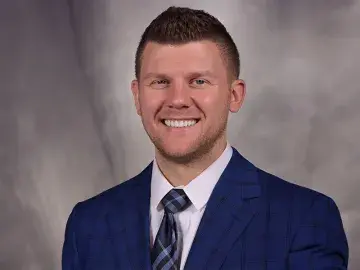Saving Limbs, Saving Lives

Every 17 seconds, someone in the U.S. is diagnosed with diabetes. Each day, 230 of them require an amputation, usually a leg because of a diabetic foot ulcer. That’s why Dr. Alexander Reyzelman, DPM '95, a graduate of and professor at Samuel Merritt University’s California School of Podiatric Medicine (CSPM), founded the Bay Area Foot Care Center and the Center for Clinical Research, and co-directs the UCSF Center for Limb Preservation and Diabetic Foot.
What led you to focus on advanced diabetic wound care?
Probably my training at the University of Texas, where there were a lot of patients with diabetes. I realized that those are the patients that have significant needs and this is where we can make a huge difference. A survey recently asked diabetic patients what they feared the most. And you know what they said? They didn't fear death or going blind, two all-to-common outcomes of diabetes. The thing they said they feared the most was losing their leg. And that speaks volumes to what we do. Keeping their leg on them is really incredibly gratifying.
What’s the key to saving “at-risk” limbs?
It's important to keep in mind that 85% of amputations are preceded by an ulceration. The pathway to an amputation usually starts with a wound or an ulcer on the bottom of the foot. It then leads to an infection, which, if untreated, could eventually lead to an amputation. So, if we can see patients early and timely to treat the ulceration, then we can certainly prevent the amputation.
How do you encourage your patients to get treated early?
Well, it starts with educating the public about how important it is for diabetic patients to keep their blood sugar under control and to check their feet every day and wear the appropriate shoes. If they do get a wound on their foot, we want them to come in and see us right away so we can manage the ulcer and prevent infection. Sometimes, it’s a matter of giving them antibiotics. Other times, it’s about going to surgery. Whatever it is, you have to be expedient. In our field, we say time is tissue, meaning the more time that passes, the more tissue could be lost.
You’re researching “smart socks.” How can those help diabetic patients?
We know that when our patients get wounds or injuries to their feet, one of the earliest signs is that the temperature of their feet goes up. These “smart socks” are embedded with temperature sensors. If the patient’s temperature goes above a certain threshold, we (doctors) get alerted. So, these socks are another way for us to monitor patients when they’re at home.
What’s your professional schedule like?
If you want to be involved with limb salvage, you have to be ready to jump into action—to take that call Monday through Sunday. If you choose not to deal with diabetic patients and you choose to deal with more elective procedures, then that's a different story.
What type of person makes a good podiatrist?
A compassionate person. Someone who enjoys people and is patient-friendly. I think podiatrists are known to be happy individuals who like to connect with their patients. We tend to see patients for many years and some become our friends. So, if you get along with people and like to build relationships, it’s the right profession for you.
Why should students consider podiatry?
Podiatry is a rapidly growing field. Baby Boomers are getting older. Diabetes is on the rise. In California alone, there are more than 15.5 million patients with prediabetes and diabetes. That makes up about more than 55 percent of all adults in this state. So, that in and of itself means that we're going to have a lot of feet to take care of and a lot of amputations to prevent.


